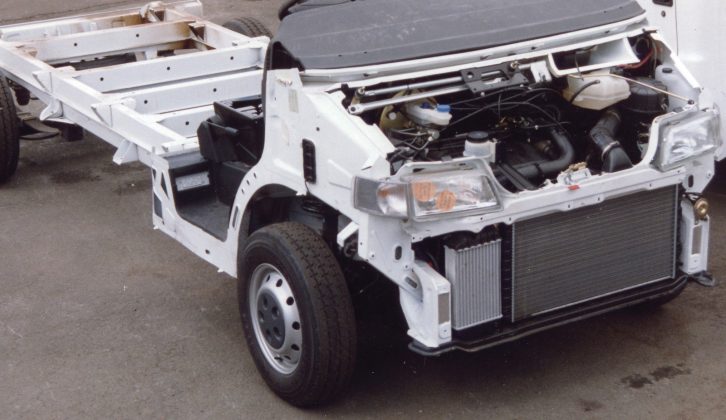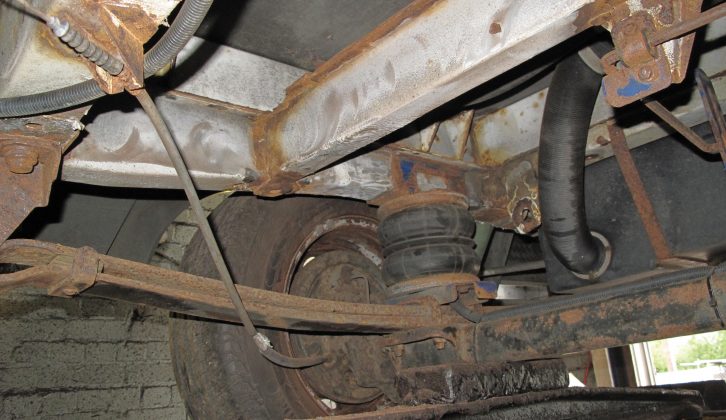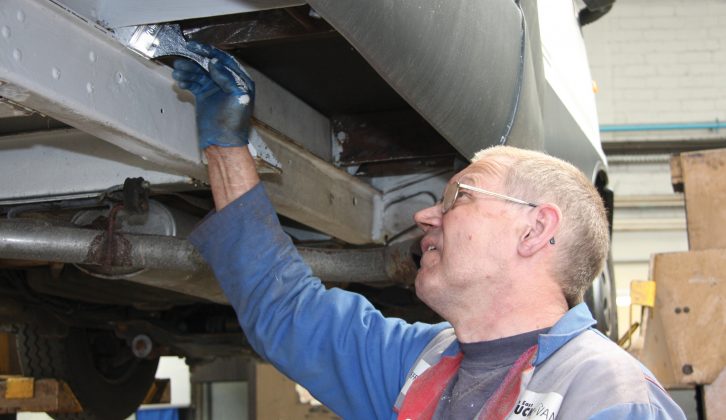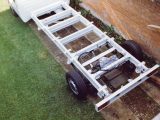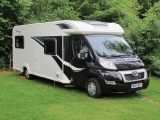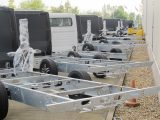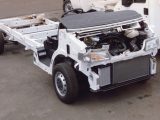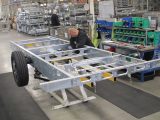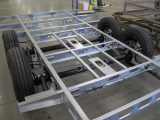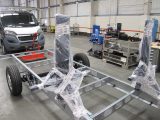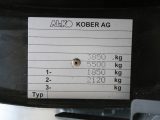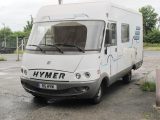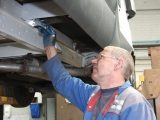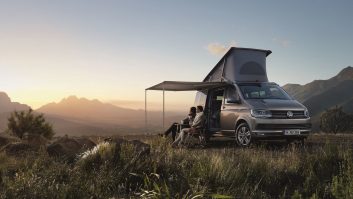Because a vehicle’s chassis is hidden below the floor, many potential owners don’t appreciate that it determines features such as the height of the habitation area, the scope for underfloor storage in the vehicle and the security of extra ‘travel seats’, as well as the ease of adding a towbar and taking care of maintenance matters.
Of course, a chassis is also linked to other underfloor items, referred to as ‘running gear’. However, we will leave the merits of different kinds of suspension, braking assemblies, wheels and tyres for another occasion.
Building and using a pair of coachbuilt motorhomes since the late 1980s has certainly taught me a number of lessons. Attending automotive crash-testing sessions has also revealed some of the weaknesses within professionally built models. The same can be said of conducting live-in tests using manufacturers’ loaned motorhomes; the time spent within them often reveals unexpected features.
It is fair to say that there are far more intriguing items of motorhome equipment to grab the interest of prospective purchasers, but a prosaic feature such as a chassis can have an impact on several ownership issues. It might also come as a surprise that there are several different types of chassis.
The five variations shown in our gallery above are well-engineered products, which are strong and reliable, as well as offering contrasting strengths – and weaknesses. Moreover, each has its particular merits and suitability for different types of motorhomes.
If we sought to find one key difference, it would be the fact that vehicle manufacturers’ chassis are usually made to meet commercial and industrial needs. The Al-Ko AMC lightweight galvanised chassis, meanwhile, are especially (though not exclusively) designed to fulfil the leisure-styles of motorhome users. When the Al-Ko AMC chassis was introduced in the early 1980s, a motorhome manufacturer would purchase a light commercial vehicle complete with a multi-purpose, heavy, rugged chassis with leaf springs. This would be sent to Al-Ko Kober to have the chassis cut away at a point to the rear of the cab. The steel sections were then scrapped and an Al-Ko chassis would be coupled-up to the cab in its place.
This is undoubtedly a wasteful process and Fiat recognised that the use of its products by motorhome builders could be improved. That’s when it started supplying cabs in pairs with no main chassis at all. The company also designed its own motorhome-specific chassis and cabs with pre-fitted swivelling seats. These units included items like camping tyres, which are designed to meet a typical motorhome’s pattern of use.
And please note: although some Al-Ko AMC chassis have been installed on rear-wheel-drive base vehicles, most are designed for front-wheel-driven models.
Chassis types: a commercial steel, painted chassis
My 16 years using a self-constructed motorhome based on a Fiat light commercial chassis have been revealing. For instance, component specifications for all light commercial vehicles are intended to suit the relatively short life and high mileages expected of most working vans. In contrast, motorhome owners typically cover lower, irregular mileages and expect their vehicles to provide enjoyable holidays for around 20 or more years.
With that in mind, my brand new chassis was meticulously injected internally with Waxoyl rust retardant before the body was fitted. However, its external white paintwork showed rust patches quite quickly and was given its first re-spray after seven years of ownership. A further re-spray was required after its 10th birthday and that was done with the help of a garage hoist.
In spite of this attention, the chassis, towbar and parts of the cab soon needed serious anti-rust treatments. After comparing several specialist service providers, a two-day concentrated refurbishment with two operators working simultaneously was carried out by Rustbusters in Poole, Dorset.
Chassis types: Al-Ko AMC systems
The fact that an Al-Ko chassis has a galvanised finish and needs no maintenance is a great asset. However, after driving on treated roads in winter, you’d be advised to hose-off excessive salt from the surface. Equally, if you hit an obstruction on the road and expose the chassis’ bare metal, it’s important to get the damaged area treated with a galvanising repair product.
Also, be aware that these chassis soon lose their smart shiny appearance, and that is normal. If the subsequent grey looks less attractive, don’t worry; it actually indicates that the treatment is following an intended ‘hardening’ process.
Other points to note include the following:
- Computer-designed chassis members are light but still achieve the rigidity that they need
- Motorhome designers’ floor heights can be achieved more easily when a chassis is specifically ordered
- An Al-Ko torsion bar suspension system is fitted to suit a new motorhome’s projected use
- Since these chassis are bolted together rather than welded, there are instances when a damaged section can sometimes be replaced
- Al-Ko accessories, such as towbars, bike racks and belted travel seats, are made to bolt on to the chassis with the minimum of difficulty
- Different types of chassis can be supplied, for example double-floor-unit types as shown in our images above.
Maintaining a painted commercial chassis
When it came to my own motorhome, the condition of its chassis was deteriorating quite rapidly after 12 years. Urgent maintenance involved welding a small steel plate on the floor below the driver’s door where holes had appeared near the sill. Fortunately, refurbishment preparation underneath, followed by the application of Waxoyl rust inhibitors, were done in time before more serious failings materialised below. It is only now that I feel that this 15-year-old vehicle will probably be in safe running order when it reaches its 20th birthday.
A prosaic feature such as a chassis can have an impact on several ownership issues









